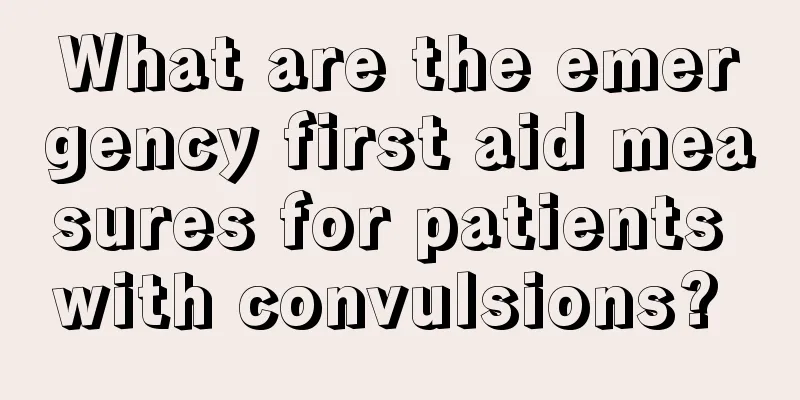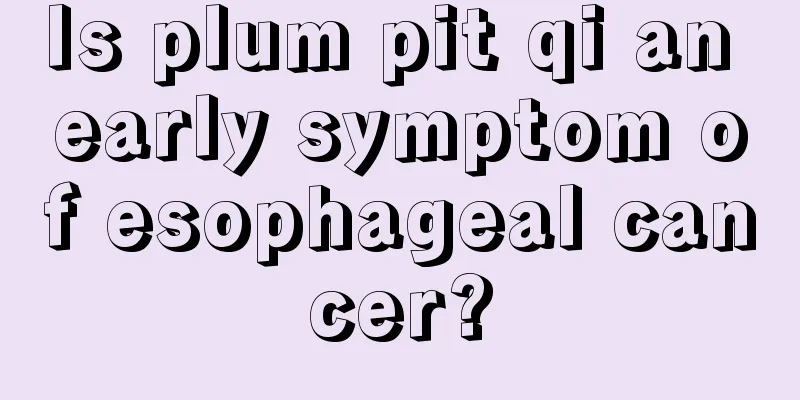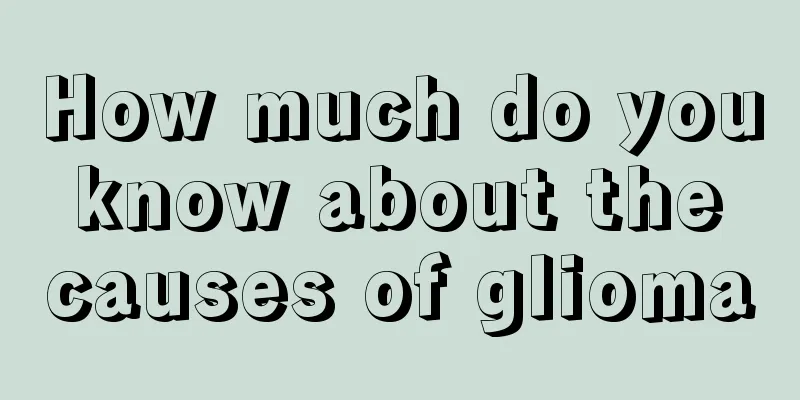What are the emergency first aid measures for patients with convulsions?

|
Convulsions are complications of many diseases, such as epilepsy, rabies, tetanus, etc. When a patient shows symptoms of convulsions, relevant personnel need to take certain emergency rescue measures, because if the patient is not treated in time, the convulsion patient may suffer physical injuries at the very least, or even life-threatening safety. Since convulsions are a relatively common disease, it is helpful for everyone to understand and even learn the emergency first aid measures for convulsions. There are many ways to treat patients with convulsions, such as placing the patient in the appropriate position, not pressing the patient, and not blindly performing cardiopulmonary resuscitation on the patient. Now let's take a closer look at the emergency rescue measures for patients with convulsions! 1. Reasonable placement of patients When a convulsion occurs, try to put the patient on a flat, spacious place, such as a large bed or on the floor; if the patient is standing or sitting when the attack occurs, help the patient lie down to avoid injury, and put soft objects under the head and neck to prevent the head from hitting the ground and getting injured during convulsions; tilt the head to one side, unbutton the collar, clear the secretions in the mouth promptly, and keep the patient's airway open. 2. Do not restrain or press the patient. When some family members see the patient convulsing, they immediately rush over and try to hold down the patient's body, patting and shouting loudly. In fact, these actions have no effect on stopping the convulsion. During the convulsion, no matter how hard you try, it will not help. Not only can it not shorten the convulsion time, Instead, it may cause fractures and joint dislocations in patients. 3. Do not pinch the philtrum, lift your lips, or perform CPR Pinching the Ren Zhong point will only cause unnecessary human injuries such as redness, swelling, or even crushing, and may even aggravate airway obstruction; do not pry open the mouth and stuff anything into it to avoid secondary injury or aspiration; do not perform cardiopulmonary resuscitation on the patient. A patient with a heartbeat and breathing is alive and does not need cardiopulmonary resuscitation. Chest compression during convulsions is more likely to cause fractures. 4. Send to hospital for treatment promptly If the convulsion does not subside for more than 5 minutes, or if the convulsion occurs repeatedly, you should call the emergency number 120; if the breathing is smooth after the epileptic convulsion and there is no further attack, you do not need to go to the hospital; but children must go to the hospital for treatment after convulsions, because febrile convulsions need to rule out brain infectious diseases, electrolyte disorders or epilepsy before a diagnosis can be made. |
<<: Can soaking your feet and sweating help detoxify?
>>: What are the main functions and effects of coenzymes
Recommend
What causes brain cancer in infants and young children
Tumors can cause increased intracranial pressure ...
What is the reason for high apolipoprotein b
Apolipoprotein B is the smallest lipoprotein in l...
Chest X-ray manifestations of cor pulmonale
The heart is the largest hematopoietic organ in t...
X-ray manifestations of pulmonary tuberculosis
Many people are infected with tuberculosis becaus...
What are the causes of sudden toothache
There are many reasons for toothache, such as car...
Symptoms of advanced cervical cancer
The lesions affect the pelvic connective tissue, ...
Is the cure rate of papillary thyroid cancer high?
Some patients with papillary thyroid cancer want ...
What causes tinea cruris? Common causes include the following:
I believe everyone is familiar with the by-electi...
What should I pay attention to when my surgical scar is red and swollen
When people suffer from serious diseases that can...
What are the ways to prevent gastric cancer? Pay attention to these three points
Gastric cancer is one of the tumors with a relati...
The efficacy of Bupleurum chinense bark
I believe that everyone does not have a clear und...
What are the benefits of applying white vinegar and honey on the face
Women like to use facial masks every day, which c...
Will lung adenocarcinoma recur? A disease prone to recurrence
Lung adenocarcinoma is a disease that is prone to...
The late symptoms of gallbladder cancer cannot be ignored!
If gallbladder cancer is not treated early, it wi...
How to use soft skin scrub
For girls, having smooth and white skin is partic...









